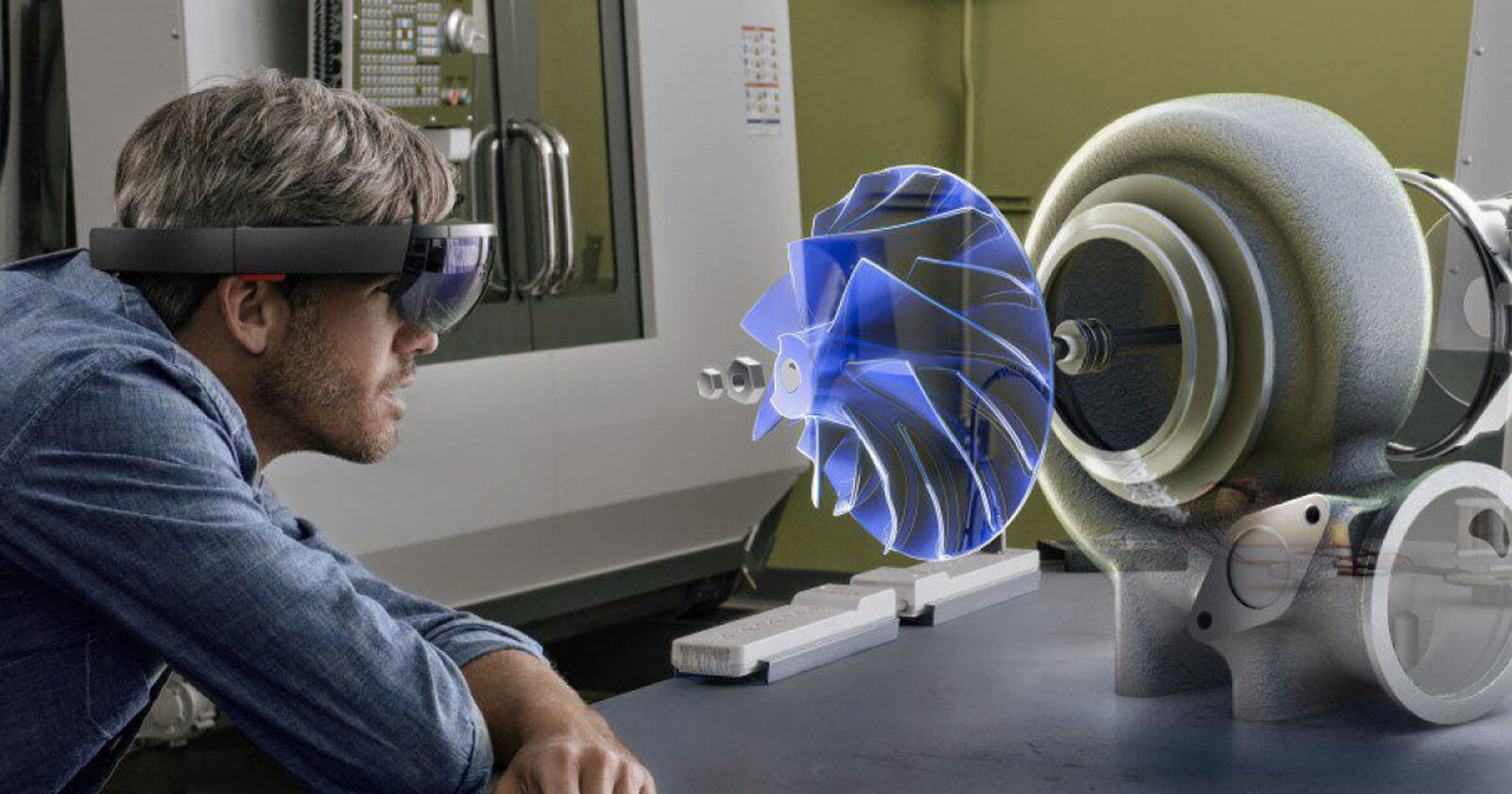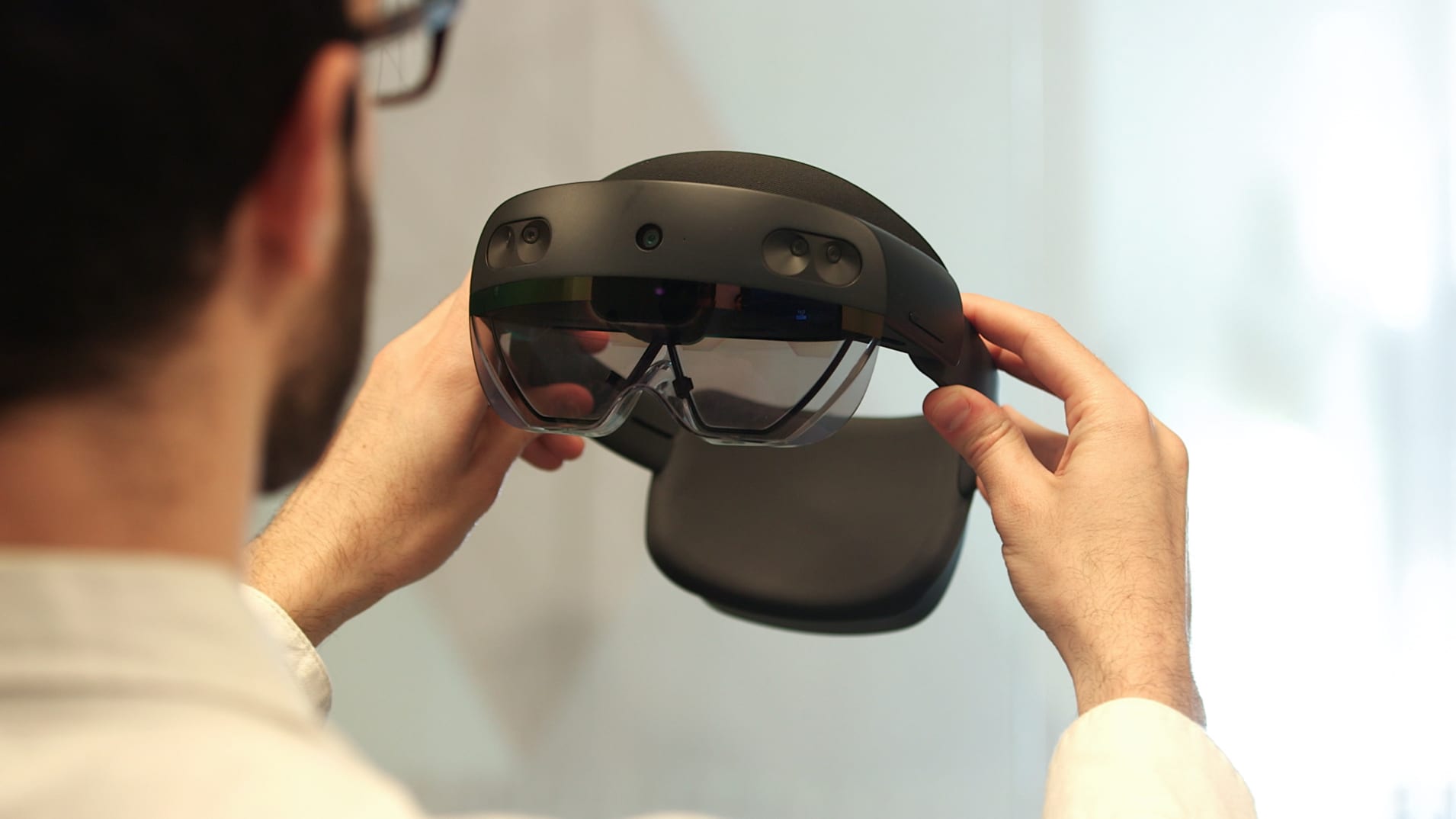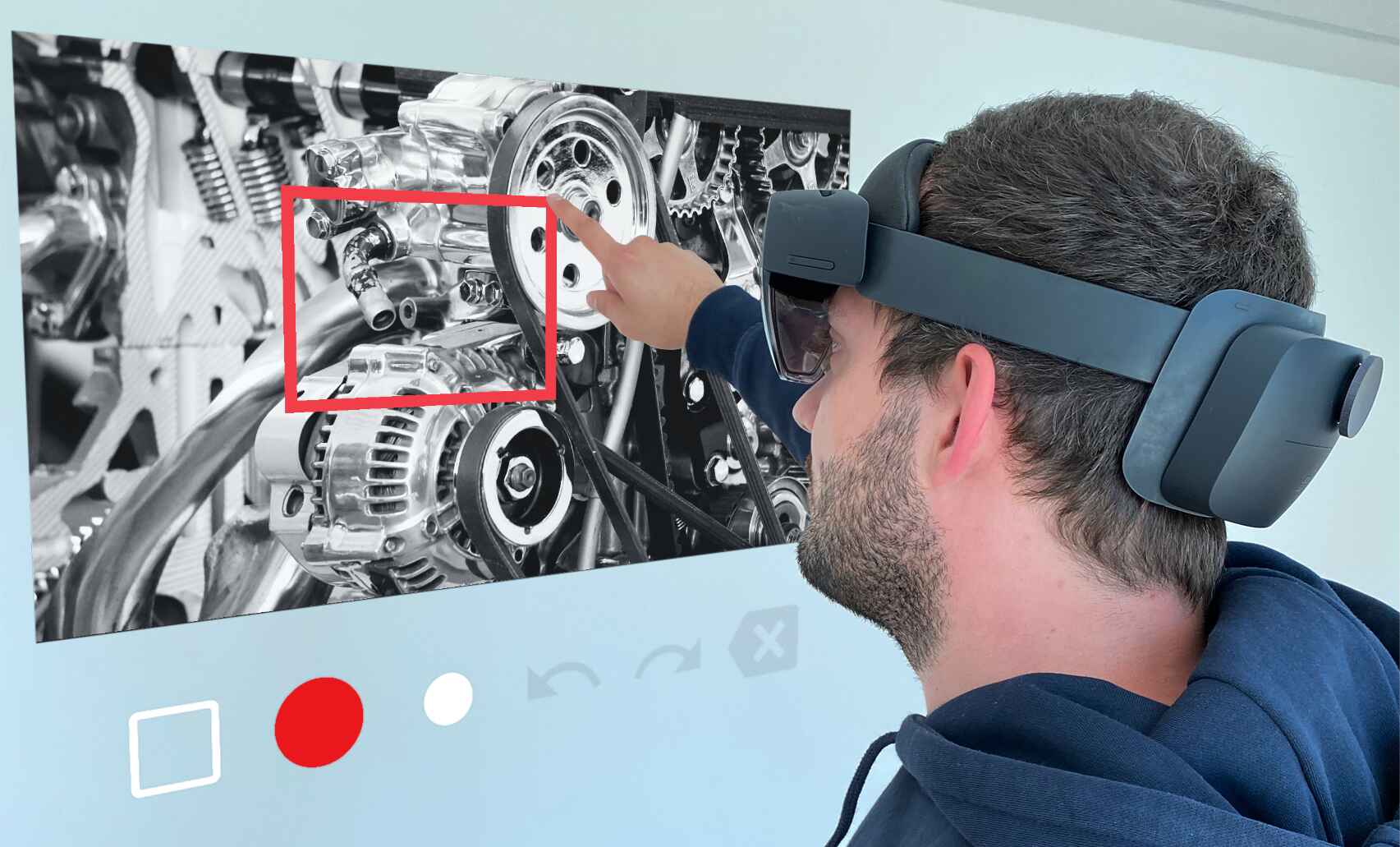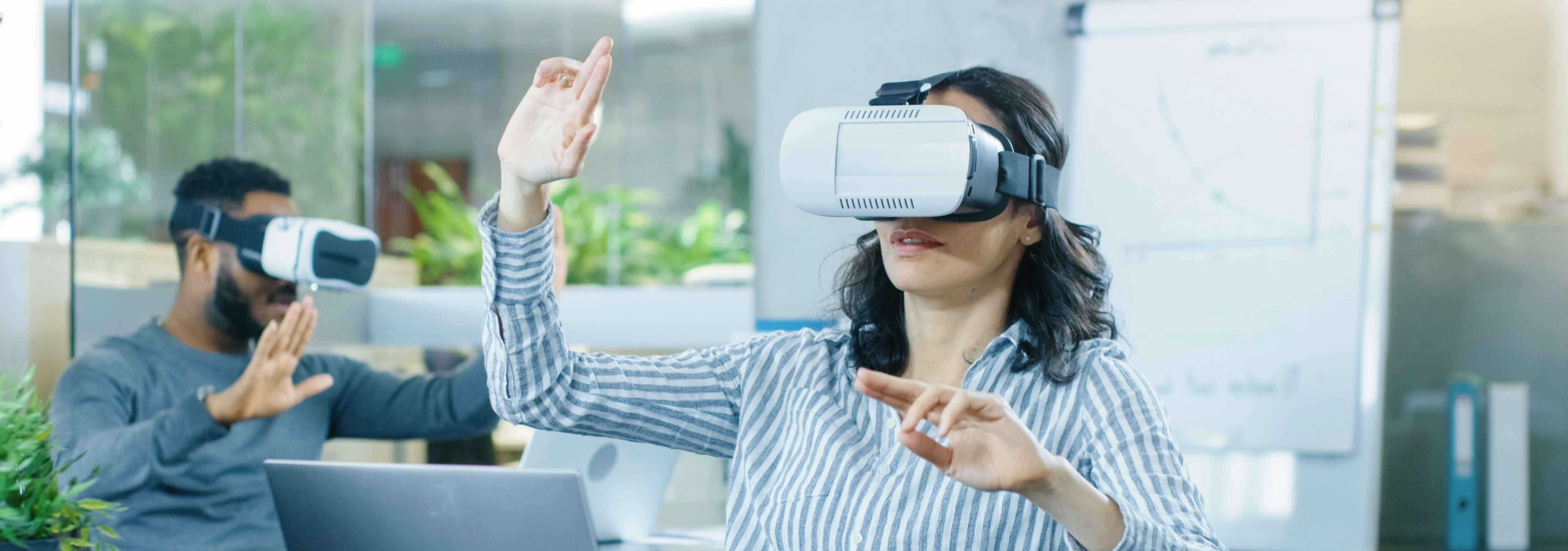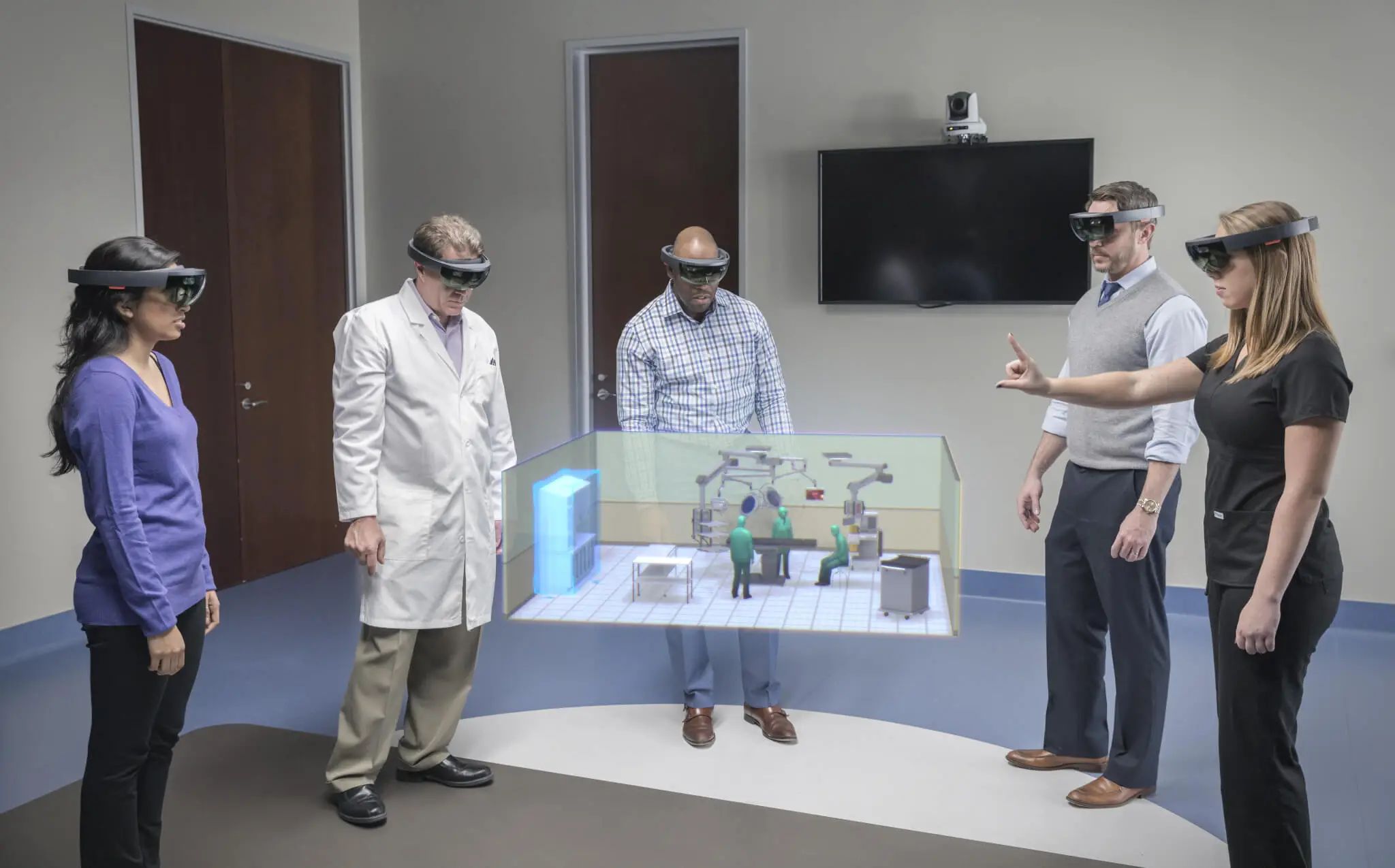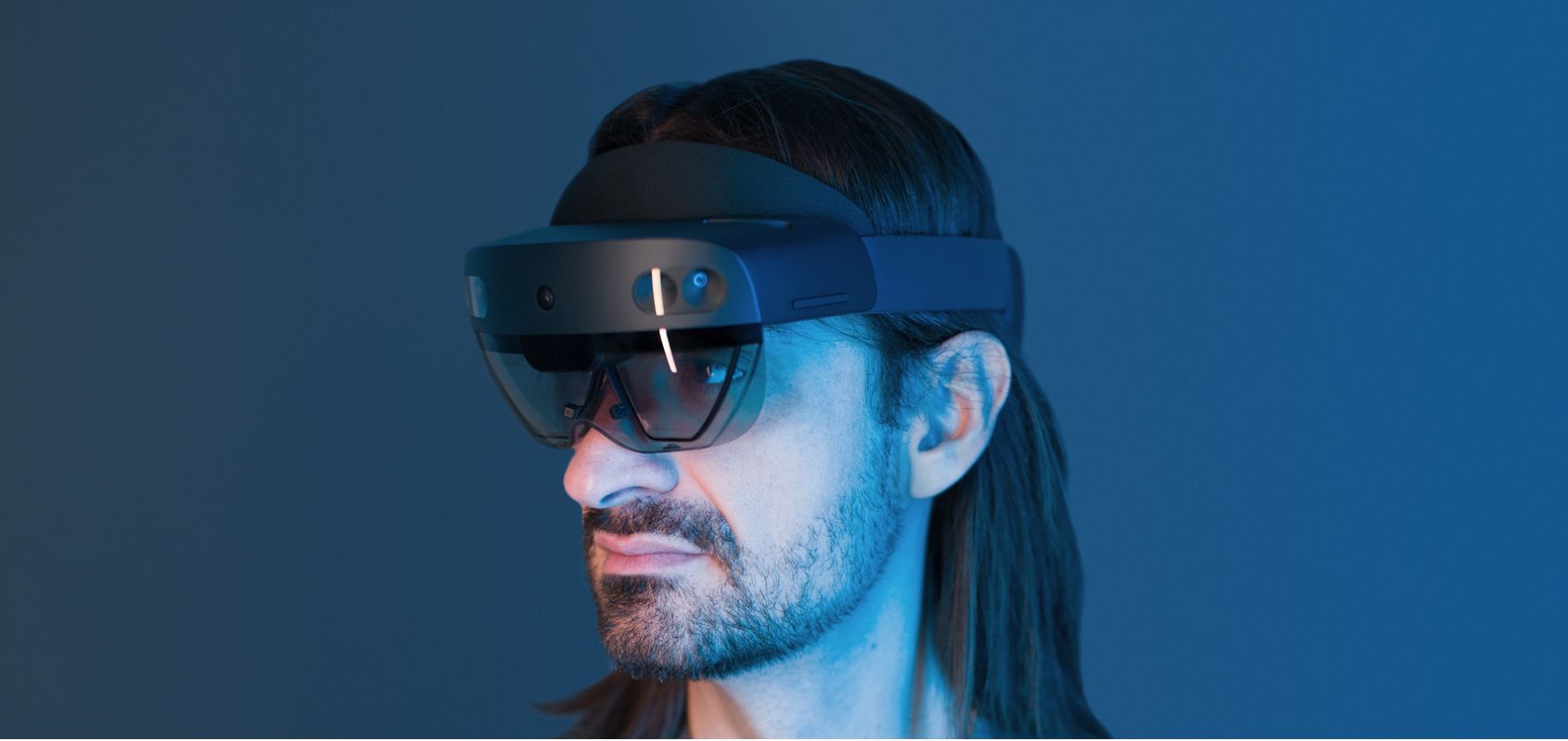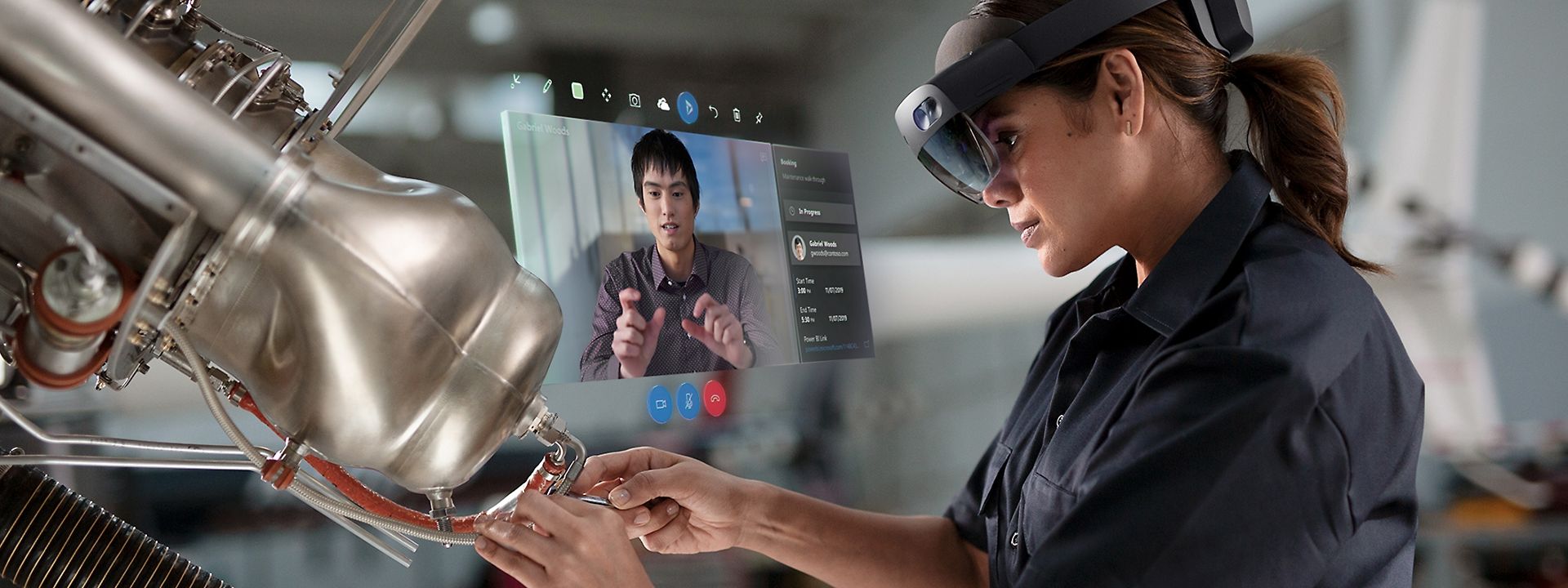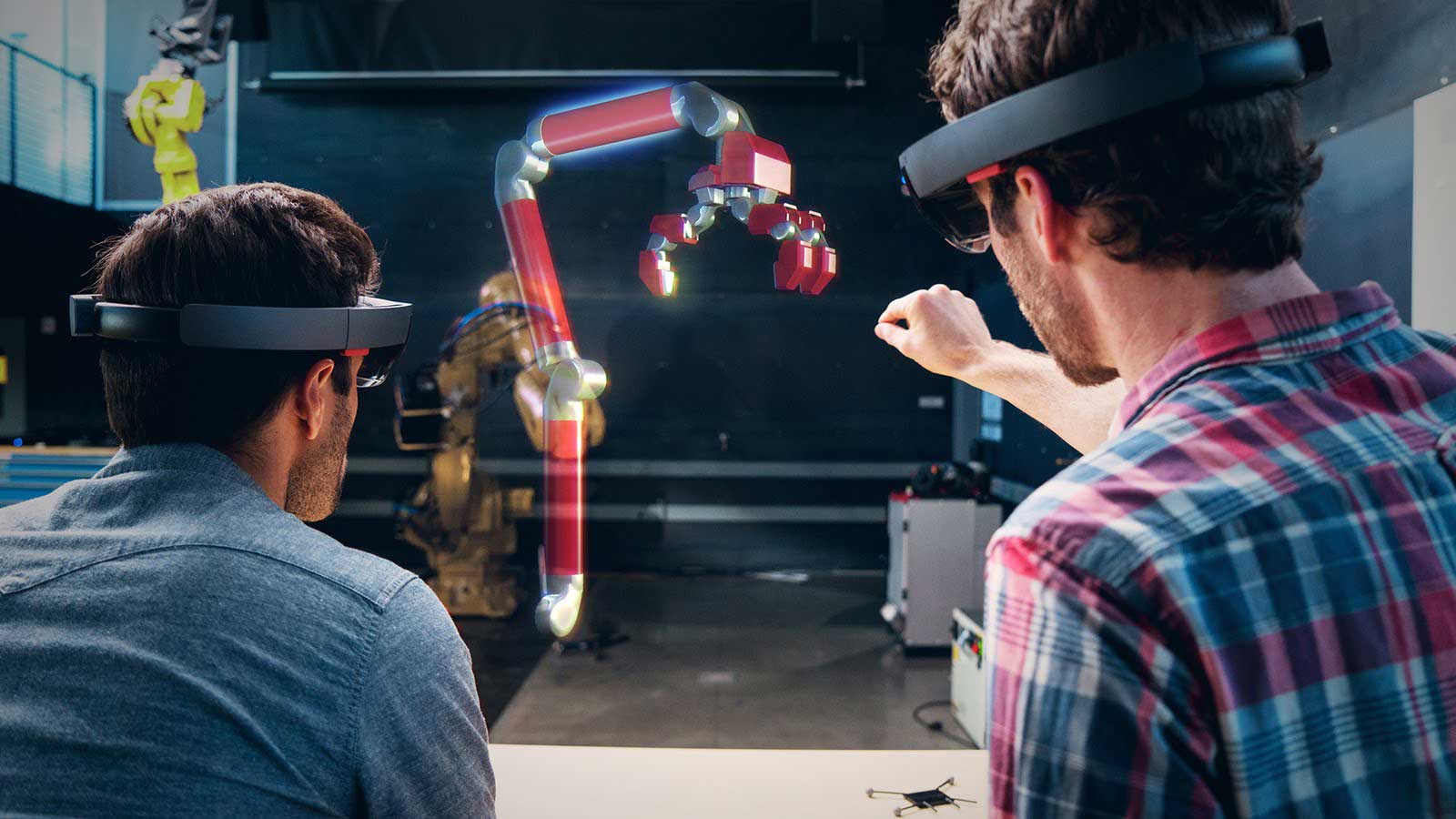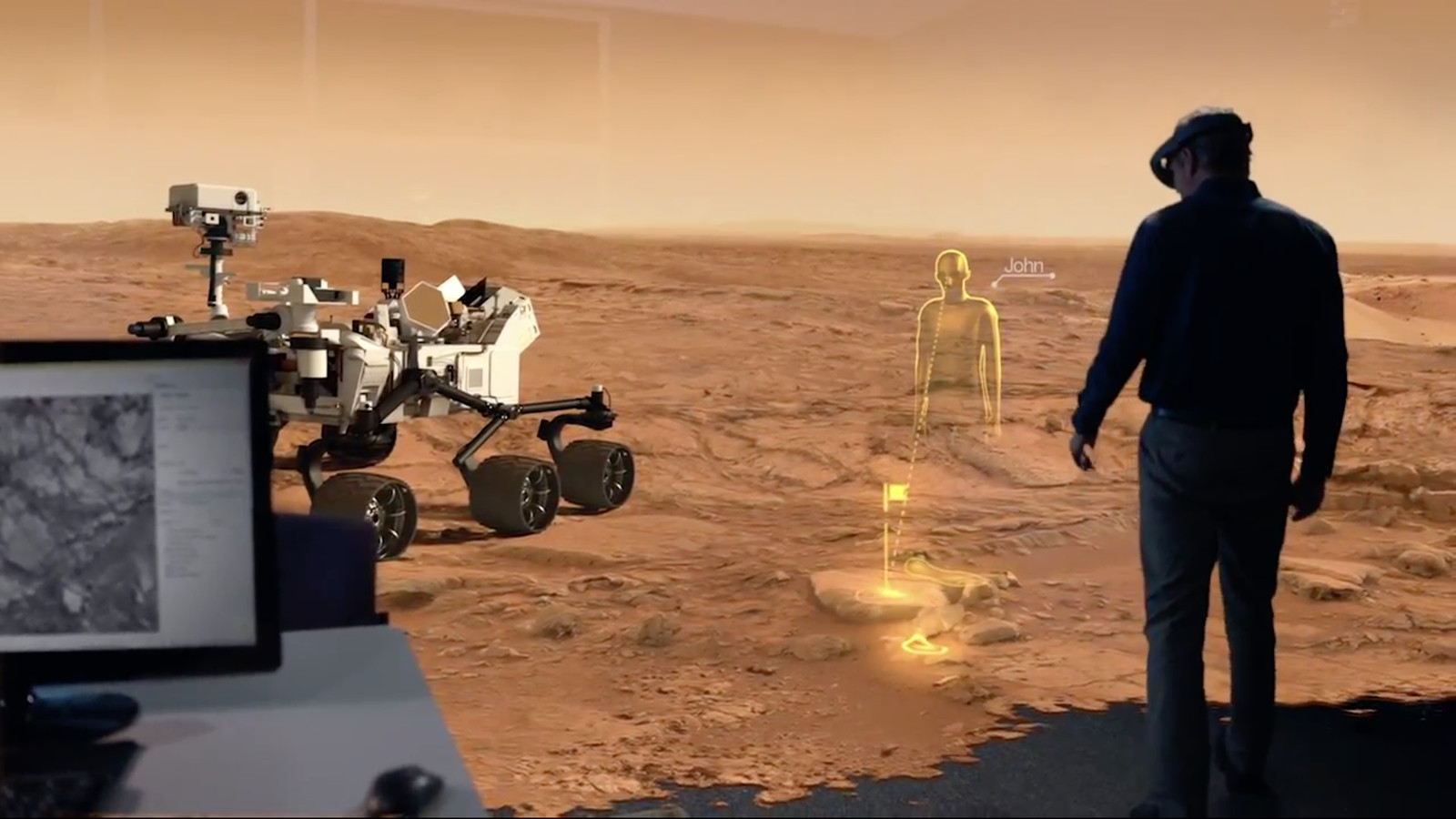Introduction
The quest to merge the virtual world with our physical reality has long captivated the imagination of scientists and engineers. One groundbreaking technology that has emerged in recent years is the HoloLens, a mixed reality device developed by Microsoft. The HoloLens creates holographic experiences that seamlessly blend with the real world, offering users a truly immersive and interactive environment. In this article, we will explore the life cycle of HoloLens, its evolution from its birth to its current state, and the potential it holds for the future.
The HoloLens was first introduced to the world in 2015, capturing attention and generating excitement with its futuristic capabilities. It represented a significant breakthrough in the realm of augmented reality (AR), taking AR from smartphone screens to a wearable device that overlays digital holograms on the physical environment. This innovative technology promised to revolutionize a wide range of industries, from gaming and entertainment to education and healthcare.
Microsoft initially released the HoloLens as a development edition, targeting developers and early adopters who could explore its potential and create applications specifically designed for the device. This version allowed developers to experiment and push the boundaries of what was possible with mixed reality. It paved the way for developers to build applications that could enhance productivity, enable remote collaboration, and revolutionize training and simulation.
Building upon the success of the development edition, Microsoft later introduced the HoloLens Commercial Suite. This version aimed to bring mixed reality to businesses and enterprises, offering additional features and capabilities tailored to meet their specific needs. It included enterprise-grade security, device management tools, and expanded support options, making it a viable solution for various industries such as architecture, engineering, and construction.
However, the HoloLens did not have the mixed reality market all to itself. Competitors emerged, pushing the boundaries of what mixed reality technology could achieve. Companies like Magic Leap and Meta attempted to challenge Microsoft’s dominance in the space. This healthy competition fueled innovation, driving the development of new hardware and software solutions and expanding the possibilities of mixed reality experiences.
Recognizing the need to continually innovate and stay ahead, Microsoft unveiled the eagerly anticipated HoloLens 2 in 2019. The next-generation device featured significant improvements and enhancements over its predecessor. With improved field of view, hand and eye-tracking capabilities, and a more comfortable fit, the HoloLens 2 aimed to deliver a more immersive and natural mixed reality experience. It further solidified Microsoft’s position as a leader in the mixed reality market.
The Birth of HoloLens
The journey of HoloLens began in the depths of Microsoft’s research laboratories, where a talented team of engineers and designers worked tirelessly to bring the concept of augmented reality to life. Combining the advancements in optics, sensors, and computing power, they aimed to create an immersive mixed reality experience that would defy expectations.
In 2015, Microsoft unveiled the HoloLens to the world, marking a significant milestone in the development of mixed reality technology. The device captured the imagination of tech enthusiasts and industry experts alike, with its ability to overlay holograms onto the real world. Unlike virtual reality, which completely immerses users in a digital environment, the HoloLens offered a unique blend of virtual and physical elements.
The birth of HoloLens represented a breakthrough in our perception of reality. It provided a glimpse into a future where our interactions with technology would be seamlessly integrated into our everyday lives. The device utilized advanced optics and sensors to track the user’s movements and surroundings, making it possible to interact with holographic objects in a natural and intuitive way.
The HoloLens opened up a world of possibilities across various industries. Architects and designers could visualize and manipulate 3D models in real-time, revolutionizing the way buildings and structures were planned. Surgeons could use holographic overlays to assist in complex medical procedures, enhancing precision and reducing risks. Artists and developers could create immersive games and experiences that blurred the lines between the real and virtual worlds.
The impact of the HoloLens extended beyond professional applications. It offered new avenues for entertainment and gaming, allowing users to interact with virtual characters and objects in their own environment. Education also benefited, as students could engage in immersive learning experiences, exploring historical sites or dissecting virtual organisms.
The birth of HoloLens was not just a groundbreaking moment in technology, but a catalyst for innovation and collaboration. Developers and enthusiasts flocked to explore its potential, creating a vibrant ecosystem of mixed reality applications and experiences. Microsoft continued to invest in the platform, supporting developers with tools, resources, and workshops aimed at expanding the capabilities of the HoloLens.
HoloLens Development Edition
Following the initial excitement and anticipation surrounding the HoloLens, Microsoft released the HoloLens Development Edition in 2016. This version was targeted specifically at developers and early adopters who wanted to dive into the world of mixed reality and create applications for the HoloLens.
The HoloLens Development Edition provided developers with the tools and resources they needed to unleash their creativity and explore the possibilities of mixed reality. It came with a complete development kit, including the device itself, documentation, and access to the HoloLens software development kit (SDK). This allowed developers to build and test applications, utilizing cutting-edge features like spatial mapping, gesture recognition, and voice commands.
The development edition not only provided developers with the hardware and software necessary for creating mixed reality experiences, but it also offered a community of like-minded individuals. Microsoft fostered a collaborative ecosystem where developers could share their knowledge, exchange ideas, and collaborate on projects. This community-driven approach helped create a thriving ecosystem of mixed reality applications and fueled innovation in the field.
With the HoloLens Development Edition, developers could explore a wide range of industries and use cases. From gaming and entertainment to healthcare and education, the possibilities were seemingly endless. They could create immersive games that transported players to fantastical worlds, design training simulations that enhanced learning and skill development, and develop enterprise applications that improved productivity and efficiency.
The development edition marked the beginning of an exciting era for mixed reality. It empowered developers to push the boundaries of what was possible and paved the way for future advancements in the field. The feedback and insights gleaned from developer experiences with the HoloLens Development Edition played a crucial role in shaping the future iterations of the device.
Microsoft actively supported developers by organizing hackathons, workshops, and conferences dedicated to mixed reality development. This helped cultivate a rich ecosystem of HoloLens applications and fostered collaboration among developers. The results were astounding, with developers showcasing innovative solutions across industries, from automotive design and engineering to architectural visualization and medical training.
The HoloLens Development Edition acted as a springboard, propelling mixed reality technology into the hands of creative minds. It set the stage for further advancements and adoption, leading to the expansion of the HoloLens product line and the emergence of commercial applications tailored for various industries.
HoloLens Commercial Suite
Building upon the success of the HoloLens Development Edition, Microsoft introduced the HoloLens Commercial Suite, catering to businesses and enterprises looking to leverage mixed reality in their operations. This version of the HoloLens brought additional features and capabilities designed to meet the unique needs of commercial users.
The HoloLens Commercial Suite offered enhanced security and management capabilities, ensuring that sensitive data and intellectual property were protected. It included features such as BitLocker encryption, secure boot, and mobile device management integration. These security measures gave businesses the confidence to deploy the HoloLens in their organizations, knowing that data and information would remain safe.
Furthermore, the HoloLens Commercial Suite provided advanced device management tools, making it easier for IT administrators to deploy, manage, and update HoloLens devices across their organization. This streamlined approach allowed for centralized control and monitoring of the devices, ensuring a consistent experience and ease of maintenance.
In addition to its security and management capabilities, the HoloLens Commercial Suite offered expanded support options. Businesses could rely on Microsoft’s dedicated support team to address any technical issues or provide guidance on best practices for implementing mixed reality solutions. This level of support gave businesses the assurance that they had a partner to lean on when deploying the HoloLens within their organization.
The HoloLens Commercial Suite found applications in various industries, including architecture, engineering, manufacturing, and healthcare. Architects and designers could use the HoloLens to visualize and modify building designs in real-time. Engineers could benefit from hands-free access to schematics and instructions, enhancing productivity and reducing errors. Medical professionals could utilize the HoloLens to improve surgical planning and remote collaboration, leading to better patient outcomes.
Microsoft’s commitment to the commercial market was evident in its partnerships and collaborations with major industry players. Through collaborations with companies such as Trimble, Autodesk, and Philips, the HoloLens Commercial Suite offered specialized applications tailored to specific industries, further expanding its potential in the business world.
The HoloLens Commercial Suite represented a significant step forward in bringing mixed reality technology to the world of business. Its enhanced security, management capabilities, and support options made it a compelling choice for enterprises seeking to leverage the power of holographic computing. This version of the HoloLens paved the way for increased adoption and opened up new possibilities for businesses across a wide range of industries.
Competition in the Mixed Reality Market
As the HoloLens gained popularity and recognition, it faced competition from other players in the mixed reality market. Companies like Magic Leap and Meta emerged, aiming to challenge Microsoft’s dominance and push the boundaries of what mixed reality technology could achieve.
Magic Leap, with its Magic Leap One headset, offered a unique approach to mixed reality with its spatial computing technology. The Magic Leap One utilized light field technology to blend virtual and physical elements seamlessly, creating a truly immersive experience. This competition spurred innovation and accelerated advancements in the field, benefiting both developers and end-users.
Meta, now acquired by Facebook, focused on augmented reality and created the Meta 2 headset. The Meta 2 aimed to provide an immersive AR experience, allowing users to interact with holograms in the real world. With its hand-tracking capabilities and a wide field of view, the Meta 2 offered a different take on mixed reality, positioning itself as a compelling alternative to the HoloLens.
This healthy competition drove the development of new hardware and software solutions, as companies vied for market share and sought to deliver the best mixed reality experiences. The advancements made by competitors pushed Microsoft to continuously innovate and improve upon the HoloLens, ensuring its position as a leader in the mixed reality market.
Recognizing the importance of collaboration and partnerships, Microsoft also formed alliances with other technology giants. Partnering with companies like Samsung, Dell, and HP, Microsoft aimed to create a robust ecosystem of devices and applications. This collaboration not only expanded the reach of mixed reality but also provided users with a broader range of options when it came to choosing their mixed reality hardware.
The competition in the mixed reality market has sparked excitement and propelled the industry forward. Not only are there advancements in hardware and software, but there is also an increased focus on creating compelling content and applications. Companies are investing in developing immersive experiences that cater to various industries, from gaming and entertainment to healthcare and manufacturing.
Ultimately, competition in the mixed reality market benefits the end-users, as they are presented with more choices and higher-quality experiences. As technology continues to evolve, the competition will drive innovation, making mixed reality a more accessible and impactful technology for individuals and businesses alike.
HoloLens 2: The Next Generation
Continuing its commitment to advancing mixed reality technology, Microsoft unveiled the highly anticipated HoloLens 2 in 2019. This next-generation device represented a significant leap forward in terms of both hardware and software, offering notable improvements over its predecessor.
One of the key enhancements of the HoloLens 2 was its improved field of view. Users experienced a larger and more immersive augmented reality space, allowing for a more natural and realistic mixed reality experience. This expansion of field of view minimized the limitations of the previous version, creating a more seamless integration of digital holograms within the physical environment.
The HoloLens 2 also introduced advancements in interaction methods. It featured improved hand and eye-tracking capabilities, allowing for precise and intuitive interactions with holographic content. Users could now manipulate and interact with holograms using natural hand gestures, while eye-tracking technology enabled more accurate and responsive interactions, enhancing the overall user experience.
Comfort was another area of significant improvement in the HoloLens 2. The device was redesigned to be more ergonomic, making it more comfortable to wear for extended periods. The weight distribution and adjustable straps ensured a better fit, reducing user fatigue and enabling longer usage without discomfort.
In addition to the hardware improvements, the HoloLens 2 came with enhancements in its software capabilities. It featured a more powerful and responsive processor, enabling faster and more efficient processing of complex holographic scenes. This facilitated smoother and more immersive experiences, allowing for greater realism and interactivity.
The HoloLens 2 was designed with enterprise users in mind. It offered enhanced support for business applications, including integration with Microsoft Dynamics 365 and Azure services. This integration allowed enterprises to leverage mixed reality to improve productivity, collaboration, and training within their organizations, driving efficiency and innovation.
Microsoft’s commitment to the HoloLens platform extended beyond the hardware and software advancements. They continued to invest in partnerships with industry leaders to create specialized solutions for different sectors. Collaboration with companies like PTC, Trimble, and Bentley Systems resulted in tailored applications for industries like manufacturing, construction, and architecture, further expanding the capabilities and potential use cases for the HoloLens 2.
The HoloLens 2 showcased Microsoft’s dedication to pushing the boundaries of mixed reality technology. Through its improved hardware, enhanced interaction methods, and software advancements, the HoloLens 2 promised a more immersive and realistic mixed reality experience. Its enterprise focus and strategic partnerships demonstrated Microsoft’s commitment to providing practical solutions for industries and propelling the adoption of mixed reality in the business world.
Current Applications of HoloLens
The HoloLens has found applications across a wide range of industries, revolutionizing the way we work, learn, and experience the world. Its unique ability to blend the digital and physical realms has opened up possibilities that were once unimaginable.
In the field of architecture and design, the HoloLens has been instrumental in visualizing and refining building designs. Architects can create 3D models and overlay them onto the physical space, allowing for real-time adjustments and improvements. This enables collaborative design reviews and enhances communication between architects, clients, and builders.
In the healthcare industry, the HoloLens offers innovative solutions for medical professionals. Surgeons can use holographic overlays to visualize patient data during surgeries, improving precision and reducing the risk of errors. Medical training and education have also been transformed, with students being immersed in interactive simulations that allow for hands-on learning experiences.
The manufacturing sector has also embraced the HoloLens for its potential to enhance productivity and efficiency. Workers can receive real-time instructions and guidance through holographic overlays, simplifying complex assembly processes. Remote collaboration is facilitated, enabling experts to provide guidance and support from anywhere in the world.
The entertainment and gaming industries have seized upon the HoloLens’ capabilities to create immersive and interactive experiences. Users can interact with virtual characters and objects in their own environment, blurring the lines between the real and virtual worlds. Imagine battling virtual enemies in your living room or exploring ancient ruins in an augmented reality game.
The HoloLens has also made a significant impact in education. Students can engage in virtual field trips, exploring historical sites or distant lands. Complex concepts can be visualized and manipulated in 3D, making learning more engaging and interactive. The HoloLens has the potential to transform traditional education and shape the future of learning.
Beyond these industries, the applications of the HoloLens continue to expand. From remote assistance in field service and repairs to enhancing retail experiences with virtual try-on capabilities, the HoloLens is being used in innovative ways across various sectors.
The current applications of the HoloLens demonstrate its versatility and potential impact. With companies and developers continuously exploring its capabilities, we can expect to see even more groundbreaking uses in the future. The HoloLens has set a new standard for mixed reality technology, transforming industries and shaping the way we interact with the digital world.
Future Prospects for HoloLens
The future of HoloLens holds immense potential for further advancements and transformative applications. As technology continues to evolve, the possibilities for mixed reality are expanding, opening doors to new horizons.
One area of development lies in the field of healthcare. The HoloLens could play a crucial role in telemedicine, enabling doctors to remotely assess and diagnose patients. It could also enhance surgical procedures by providing surgeons with real-time guidance and assistance from experts located elsewhere, improving patient outcomes and reducing the need for travel.
Education is another sector that could benefit from the future developments of the HoloLens. As the technology advances, immersive virtual field trips and interactive learning experiences will become more accessible, offering students a unique and engaging way to explore subjects and deepen their understanding.
As the HoloLens becomes more integrated with artificial intelligence and machine learning, it has the potential to revolutionize many industries. From intelligent virtual assistants to personalized shopping experiences, the HoloLens could enable a new era of personalized and adaptive technology that seamlessly integrates into our daily lives.
The HoloLens also faces the exciting prospect of becoming more lightweight and portable, making it more accessible to a wider audience. This could lead to increased adoption in consumer markets, bringing mixed reality experiences to our homes and changing how we interact with entertainment, communication, and everyday tasks.
The growth of 5G network technology offers another avenue for the future development of the HoloLens. With faster and more reliable connectivity, the HoloLens could take advantage of cloud computing and streaming capabilities, enabling high-quality and data-intensive mixed reality experiences without the need for powerful local hardware.
Furthermore, the HoloLens will continue to benefit from collaboration and partnerships with industry leaders. As more developers and companies join forces, expanding the ecosystem of applications and content, the HoloLens will become even more versatile and powerful, offering users a vast array of experiences and possibilities.
The future prospects for HoloLens are filled with promise. As technology progresses and innovators continue to push the boundaries, the potential for transformative applications in various fields is limitless. The HoloLens represents a major step forward in merging the physical and virtual worlds, and its future developments will shape how we interact with technology in the years to come.
Conclusion
The HoloLens has proven to be a game-changing technology that has revolutionized the way we perceive and interact with our environment. From its birth as a concept in Microsoft’s labs to the release of the HoloLens 2, it has undergone significant improvements and advancements, solidifying its position as a leader in the mixed reality market.
The HoloLens has found applications across various industries, including architecture, healthcare, manufacturing, entertainment, and education. Its ability to seamlessly blend virtual holograms with the real world has opened up new possibilities in design, training, collaboration, and visualization.
The competition in the mixed reality market has driven innovation and contributed to the continuous improvement of the HoloLens. Competitors have pushed the boundaries of mixed reality technology, spurring Microsoft to consistently enhance the HoloLens and offer users a more immersive and seamless experience.
The future prospects for the HoloLens are exciting. As technological advancements continue, we can expect to see even more transformative applications in healthcare, education, and various other industries. The integration of artificial intelligence, machine learning, and 5G network capabilities will further enhance the potential of the HoloLens, making it more versatile and accessible.
Collaboration with industry leaders and developers will continue to expand the ecosystem of HoloLens applications and content, providing users with a diverse range of experiences and possibilities.
In conclusion, the HoloLens has made a significant impact on the world of mixed reality and has set a new standard for immersive technology. Its evolution from its birth to its current state demonstrates Microsoft’s commitment to pushing the boundaries of what is possible. As we look towards the future, the HoloLens promises to play a pivotal role in transforming industries, revolutionizing education, and shaping the way we interact with technology in our daily lives.







